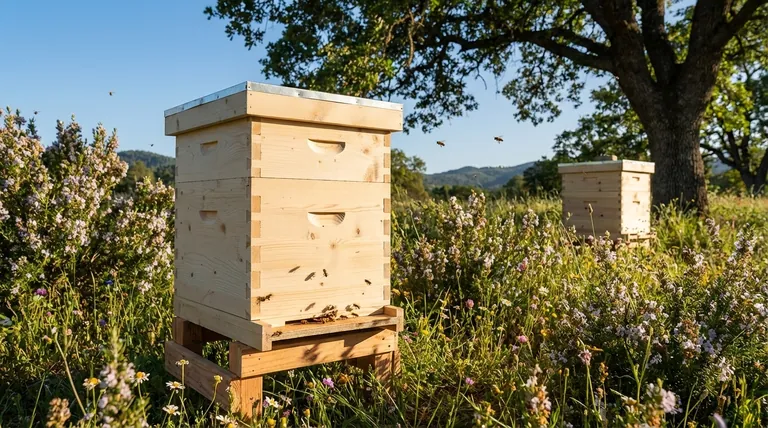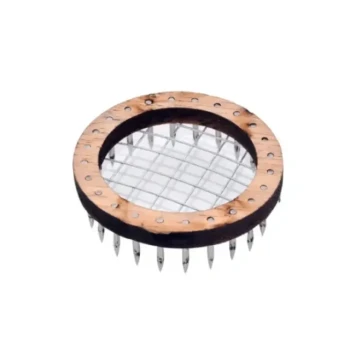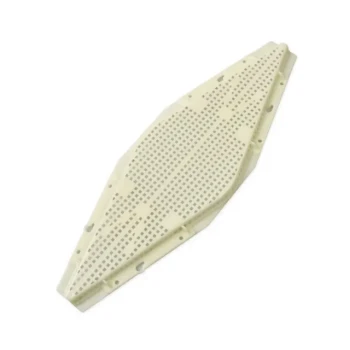The structure of a bee's body is called its anatomy, which is divided into three main sections: the head, the thorax, and the abdomen. If you are asking what the structure a bee builds is called, it is most commonly known as a nest or a hive.
The term "bee structure" can refer to two distinct concepts: the biological makeup of the bee itself (its anatomy) or the dwelling it constructs (its nest). Understanding both is key to fully appreciating the world of bees.

The Anatomy of a Bee: A Three-Part System
A bee's body is a marvel of specialization, with each of its three sections serving a critical function for survival and pollination.
The Head: The Sensory Hub
The head is the bee's command center for sensing its environment. It houses the brain and key sensory organs.
This includes a pair of large compound eyes for detecting movement and patterns, as well as smaller simple eyes (ocelli) for sensing light intensity.
A pair of antennae are crucial for touch and smell, detecting chemicals in the air to find flowers and communicate.
The head also contains the mandibles (jaws) for chewing and manipulating wax or wood, and the proboscis, a tube-like tongue for drinking nectar.
The Thorax: The Center of Motion
The thorax is the middle section of the bee and is dedicated to movement.
It is the anchor point for the bee's two pairs of wings and its three pairs of legs. These legs are often specialized, with some containing "pollen baskets" for carrying pollen back to the nest.
The Abdomen: The Operational Core
The abdomen is the final segment and contains the bee's vital organs.
This includes the digestive tract, reproductive organs, and, in female bees, the stinger for defense.
The Structures Bees Build: Nests and Hives
While a bee's body is its personal structure, the structures they build are essential for the colony's survival. The term used often depends on the type of bee.
Natural Nests
Many bee species, especially solitary bees and bumblebees, build nests. These can be found in a variety of locations, such as hollow trees, underground burrows, or even empty snail shells.
The Honey Bee Hive
For honey bees, the structure they build is called a hive. This complex structure is made from wax secreted by the bees, which they form into the iconic hexagonal cells of a honeycomb.
These cells are used for everything from raising young (brood) to storing honey and pollen.
Making the Right Choice for Your Terminology
How you refer to a "bee structure" depends entirely on your context.
- If your primary focus is on the bee's biology: You are referring to its anatomy, which is comprised of the head, thorax, and abdomen.
- If your primary focus is on what a bee builds: You are referring to its nest or, in the specific case of honey bees, its hive.
Ultimately, both the bee's internal structure and the external one it builds are perfectly engineered for its survival.
Summary Table:
| Structure Type | Key Components | Primary Function |
|---|---|---|
| Bee Anatomy | Head, Thorax, Abdomen | Bee's biological body structure for survival and pollination. |
| Bee Nest/Hive | Honeycomb, Wax Cells | Dwelling built by bees for raising young and storing food. |
Ready to support your bee colonies with the right equipment?
Whether you manage a commercial apiary or distribute beekeeping supplies, understanding bee biology is the first step. The next is equipping your operation with durable, high-performance gear.
HONESTBEE supplies the essential tools—from hive components to protective gear—that help beekeepers and distributors succeed. We focus on wholesale operations to ensure you get the reliable equipment your business depends on.
Contact our team today to discuss your wholesale needs and see how HONESTBEE can be your trusted partner in beekeeping.
Visual Guide

Related Products
- Wholesales Dadant Size Wooden Bee Hives for Beekeeping
- Professional Galvanized Hive Strap with Secure Locking Buckle for Beekeeping
- Wooden Bee Brush with Double-Row Horsehair Bristles
- Premium Comfort Grip Spring-Loaded Hive Handles
- Versatile Ratchet Hive Strap with S-Hooks for Secure Fastening
People Also Ask
- What are the characteristics of oil-based paint for beehives? Durability vs. Modern Practicality
- Why were wooden hives traditionally preferred? For Natural Beekeeping Aligned with Bee Biology
- What are the essential pieces of equipment for most beekeepers? Get Started with the Right Gear
- How often should the area under beehives be inspected and cleaned during the warm season? A Proactive Maintenance Guide
- What should you do if you find an ant nest near your beehive? Essential Strategies for Hive Protection



















